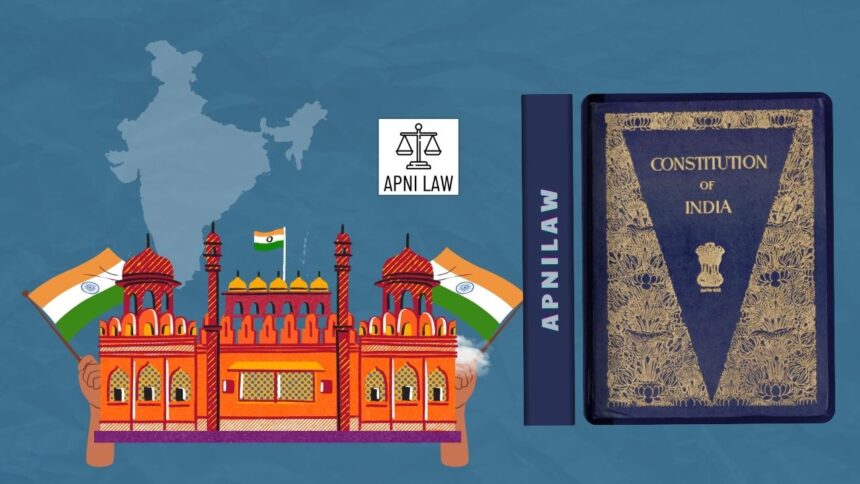Introduction
In India’s parliamentary democracy, all financial legislation must align with specific constitutional provisions to maintain transparency and accountability in public spending. Articles 110 and 117 of the Indian Constitution define two major types of financial bills, Money Bills and Financial Bills. Though both deal with government finances, their scope, introduction process, and approval procedures differ significantly. Understanding this distinction is vital for grasping how financial control and legislative balance are maintained between the Lok Sabha and Rajya Sabha.
What Is a Money Bill Under Article 110?
A Money Bill, as defined under Article 110, deals exclusively with specific financial matters. These include the imposition, abolition, or regulation of taxes, borrowing of money by the government, or custody and withdrawal from the Consolidated or Contingency Funds of India. It also covers appropriation of funds, audit reports, and any incidental financial matters.
Only those bills that deal solely with such topics qualify as Money Bills. The Speaker of the Lok Sabha holds the exclusive authority to certify a bill as a Money Bill. Once introduced, it can only be presented in the Lok Sabha, not in the Rajya Sabha. The Rajya Sabha cannot amend or reject a Money Bill, it can only recommend changes, which the Lok Sabha may accept or ignore. Once passed by the Lok Sabha, the bill is sent directly to the President for assent. This process ensures that the elected house holds financial supremacy, emphasizing accountability to the people.
What Is a Financial Bill Under Article 117?
A Financial Bill, under Article 117, is a broader category that includes any bill dealing with government finances but may also contain non-financial provisions. It is divided into two types, Category I and Category II, each with distinct rules and procedures.
A Category I Financial Bill includes provisions similar to a Money Bill but also contains additional legislative elements. It must receive the President’s recommendation and can only be introduced in the Lok Sabha. However, unlike a Money Bill, the Rajya Sabha can reject or amend it.
A Category II Financial Bill, on the other hand, deals with expenditure from the Consolidated Fund but not exclusively with the matters listed in Article 110. Such bills can be introduced in either House but still require the President’s recommendation for financial provisions. This category reflects the broader legislative control of Parliament over government expenditure.
How Do Money Bills and Financial Bills Differ?
The main difference lies in their scope, introduction, and legislative control. Money Bills focus strictly on taxation and expenditure-related matters. They are exclusive to the Lok Sabha, and the Rajya Sabha’s role is purely advisory. In contrast, Financial Bills may include general legislative provisions and give the Rajya Sabha greater power to debate, amend, or reject.
Another key difference is certification. A Money Bill must be certified by the Speaker of the Lok Sabha, while Financial Bills do not require any such certification. All Money Bills are Financial Bills by nature, but not every Financial Bill qualifies as a Money Bill.
Why Does the Speaker’s Certification Matter?
The Speaker’s certification of a bill as a Money Bill is final and cannot be challenged in court. This gives the Speaker immense constitutional responsibility to ensure the bill strictly adheres to Article 110. However, the certification process has occasionally been controversial, especially in cases like the Aadhaar Bill, where debates arose over whether it truly qualified as a Money Bill. This makes the Speaker’s role central to maintaining the constitutional balance of financial legislation.
What Is the Significance of Presidential Recommendation?
Both Money Bills and Financial Bills require the President’s recommendation before introduction, ensuring executive oversight of government spending proposals. This aligns the legislative process with fiscal discipline and prevents arbitrary financial commitments. However, the requirement does not extend to bills that propose reducing or abolishing existing taxes, which legislators can introduce independently.
Why Is Parliamentary Control Over Finances Important?
The financial privileges of the Lok Sabha reflect the principle that taxation and expenditure must be approved by the directly elected representatives of the people. This ensures democratic accountability in public finance. Meanwhile, by allowing the Rajya Sabha to discuss and suggest amendments to Financial Bills, the Constitution promotes a healthy system of checks and deliberation without undermining the authority of the elected chamber.
Conclusion
Articles 110 and 117 collectively form the foundation of India’s financial legislative framework. They ensure that government revenues and expenditures are debated, scrutinized, and approved in a constitutionally structured manner. While Money Bills safeguard the financial primacy of the Lok Sabha, Financial Bills maintain a wider legislative balance by involving both Houses of Parliament. Together, they reinforce transparency, accountability, and democratic control over the nation’s finances, core pillars of India’s constitutional governance.








